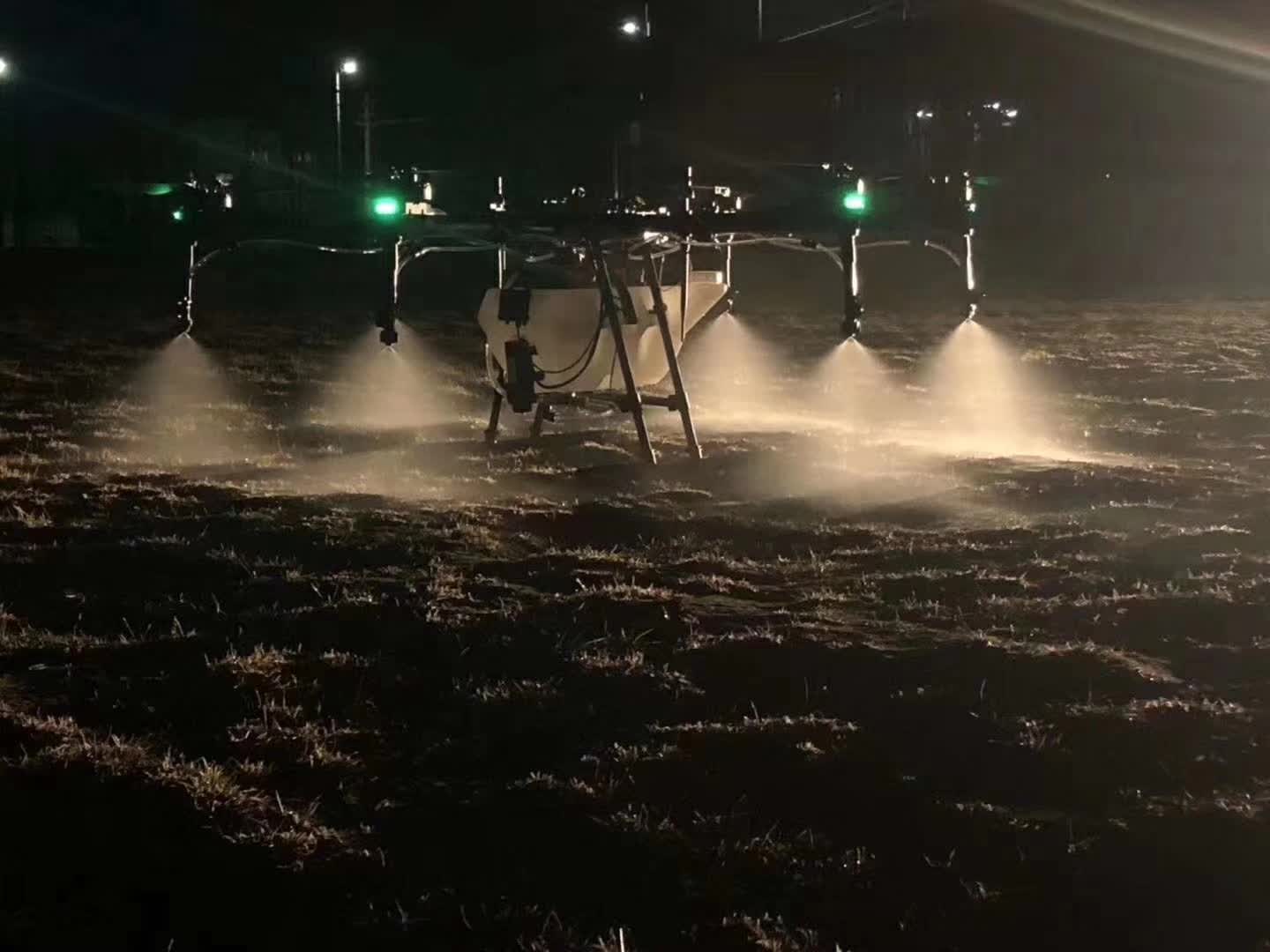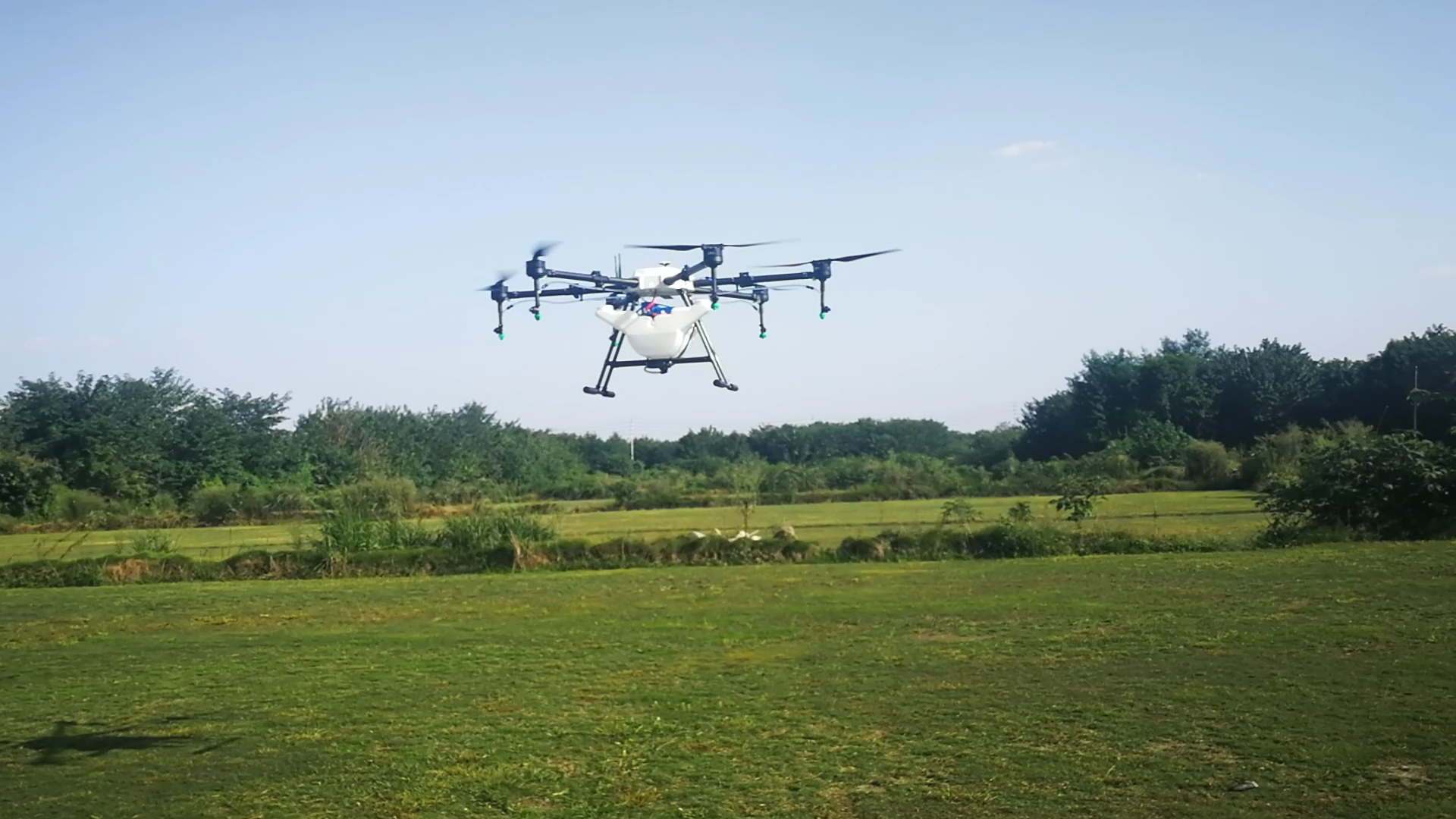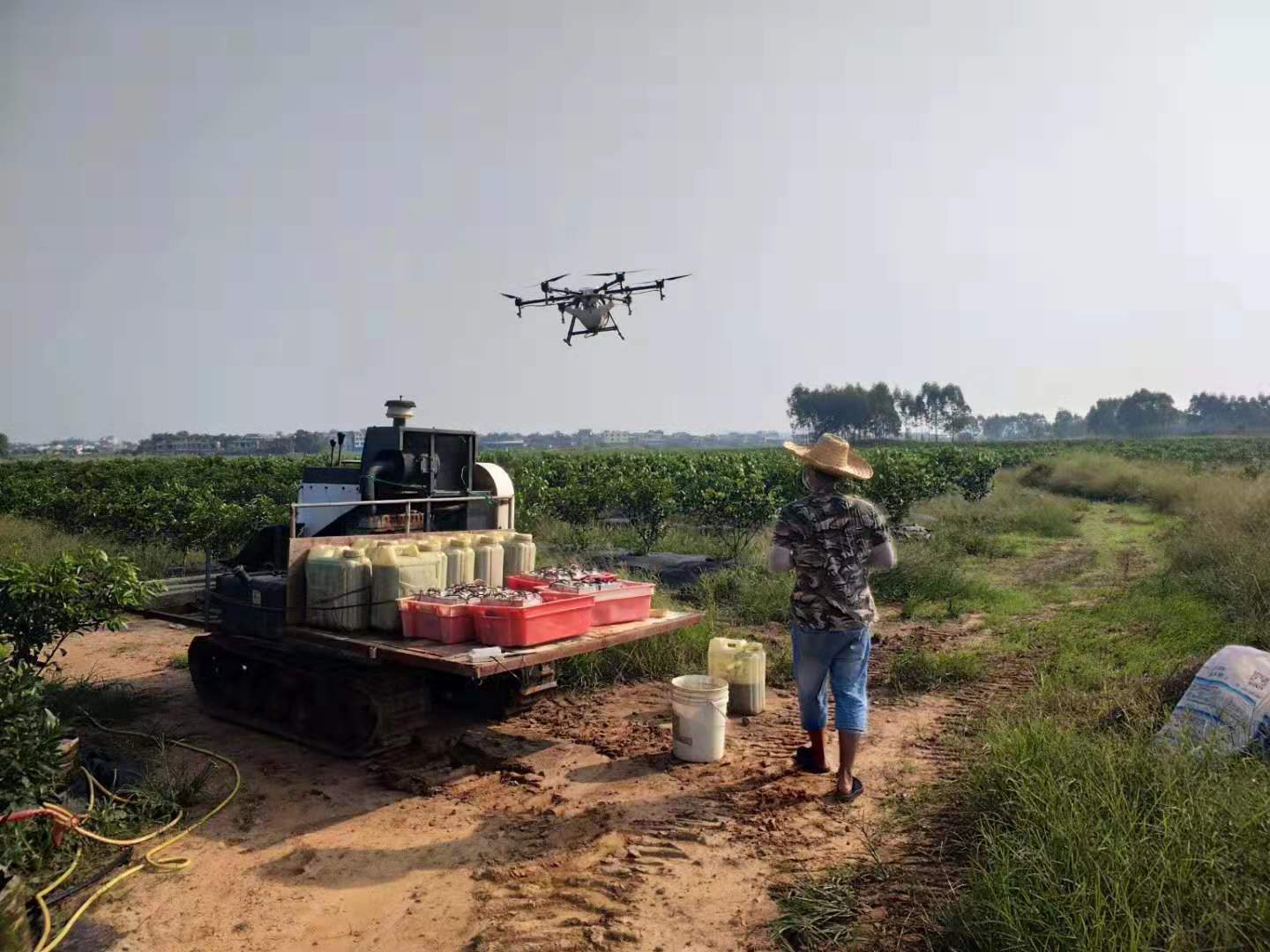How to choose pesticides use agriculture drone to spraying for crops

Not all pesticides can be used on all kinds of crops. Some pesticides are not applied properly, which not only has no effect, but will cause phytotoxicity to crops and cause loss of production. So which crops will spray different pesticides cause phytotoxicity by agriculture drone? Today we will share with you
Mancozeb (non-complexed mancozeb)
It is not suitable for the young fruit stage of edamame, lychee, grape, tobacco, cucurbitaceous crops, and some pear tree varieties with caution. When mancozeb is applied to small pears, it is easy to cause surface spots. When the concentration is too high, it is easy to produce phytotoxicity on jujube trees.
Propiconazole
Use in the seedling stage will easily reduce the seedling rate, stiff seedlings, inhibit growth, and burn young fruits. Try to use it in the middle and late stages of the crop; it is sensitive to melons, grapes, strawberries, tobacco and other crops. Please strictly control the dosage and use it after the fruit is set.
Pentachloronitrobenzene
Excessive use makes pentachloronitrobenzene easy to cause phytotoxicity when it comes in contact with the sprouts of crops.
Chlorothalonil
High concentrations are prone to phytotoxicity to pear trees, persimmons, peaches and plums. The apple cannot be used within 20 days after the flower has fallen.
Hymexazol
Can not be mixed with strong acid agents, 100 times liquid may have slight phytotoxicity to wheat, so pay attention to it when using it.
Kasugamycin
It has slight phytotoxicity to soybeans and lotus roots, so be careful when using adjacent soybeans and lotus roots.
Sulfur
Cucumbers, beans, potatoes, peaches, plums, pears, grapes and other crops are sensitive to the drug and are prone to phytotoxicity. When using, it should be adapted to reduce the concentration or reduce the frequency of application. In the hot season, apply the medicine early and late, and avoid applying the medicine at noon.
Engine oil emulsion
Spray oil emulsion 150 times + 40% hydrocarbophos 1200-1500 times during germination and flowering period, causing phytotoxicity, stone sulfur mixture and Bordeaux mixture can be sprayed 10-15 days after spraying oil emulsion; within 1 week after spraying loose alkali mixture Organophosphorus pesticides shall not be used, and stone-sulfur mixture shall not be sprayed within 20 days.
Chunlei Copper Chloride (Carinon)
The young leaves of crops such as apples, grapes, soybeans and lotus roots are sensitive to the drug and may appear slightly curled and brown spots. Pay attention to the concentration when using it. It is advisable to spray me after 4 pm.
Bordeaux mixture
Cabbage, peach, plum, and nai are sensitive to them during the growth period, and no matter what the formula is, they are prone to phytotoxicity; it can be used on apples, pears and grapes. To prevent and treat citrus scabs in spring, when the temperature exceeds 30℃ and the bud length exceeds "1cm", spraying 0.8% equivalent Bordeaux mixture will produce serious burnt buds. It is safer to spray 0.5% double Bordeaux instead; pear is safer to copper If you are sensitive to ions, you need to use double-volume Bordeaux liquid; grapes are sensitive to lime, and half-volume Bordeaux liquid should be used. For example, the high temperature period around noon in summer, rainy days, wet morning mist, and strong wind sprays can easily cause phytotoxicity.
Lime Sulfur Mixture
It is prone to phytotoxicity to the young and tender tissues of fruit trees such as grapes, peaches, pears, plums, plums, and apricots. Care should be taken when using them. It is best to spray during the deciduous season, and never use during the growing season or fruiting season. It has certain phytotoxicity to kiwi fruit, grapes, cucumber and legume flowers.
2,4 drops of butyl ester
Cotton, beans, vegetables, rape and other dicotyledonous plants, large, wheat, and rice seedlings should not be used before the 4-leaf stage and after jointing.
Amitraz
Golden Delicious apples with short fruit branches are sensitive to the drug and have burned leaves.
Propargyl
Crop seedlings and young shoots and young leaves are sensitive to the drug under high temperature and high humidity conditions and are prone to phytotoxicity. For crop safety, the dilution factor of 73% EC should not be less than 3000 times for melons, beans and cotton seedlings under 25 cm, and it should not be less than 2000 times for citrus new shoots and tender leaves.
Triazotin
The use concentration should be 1500-2000 times liquid. In the low temperature period, the common concentration will have lighter phytotoxicity to the spring shoots and young leaves, and also cause falling flowers, leaves, fruit, etc. The use of 10-15 cm of the new shoots of oranges is easy to cause phytotoxicity.
Malathion
Some varieties of tomato seedlings, melons, cowpea, sorghum, cherries, pears and apples are sensitive to the drug. Pay attention to the concentration when using it.
Dimethoate, Omethoate
Some varieties of hops, asteraceae, sorghum, tobacco, jujubes, peaches, apricots, plums, figs, oranges and other crops are sensitive to dimethoate emulsion diluted below 1500 times. If peanuts are used too many times, it will cause The leaves do not close at night, so pay attention to the concentration before use.
Trithion
Cruciferous vegetables such as cabbage, radish, broccoli, cabbage, green cabbage, cauliflower, and sorghum are sensitive to this, so be careful when using it.
Phoxim
Cucumbers, kidney beans, and watermelon are sensitive to the drug. 50% EC 500 times liquid spray may cause phytotoxicity, and 1000 times liquid may also have slight phytotoxicity; sugar beets are also more sensitive to phoxim. If the seeds are mixed, it should be appropriate Decrease the dose and time of boring seeds. Sorghum is sensitive and should not be sprayed; maize can only be treated with granules to prevent and control maize mint; when the temperature is high, it is sensitive to leafy vegetables and easy to burn.
Triazophos
Crops such as sugarcane, water chestnut and corn are prone to phytotoxicity.
Chlorpyrifos
Chlorpyrifos is very sensitive to tobacco and lettuce and should be prohibited from being used; it is phytotoxic to melon seedlings and should be used after melon vines are 1 meter long. In addition, certain cherry varieties are also very sensitive to it.
Acetaminophen
Avoid spraying during the flowering period to avoid phytotoxicity. The use time should be before flowering. The use concentration should not be increased arbitrarily, otherwise it will cause brown leaf spots. From June to July, when the temperature exceeds 30℃, use 800-1000 times, the young fruit is very easy to produce phytotoxicity.
Profenofos
When the concentration is high, it has certain phytotoxicity to cotton, melons and beans, and phytotoxicity to alfalfa and sorghum; for cruciferous vegetables and walnuts, avoid using it during the flowering period of the crop.
Dichlorvos (Dichlorvos)
Sorghum and beans are particularly sensitive and should not be used; melon seedlings, corn, apples (such as Shuguang, Marshal, etc.) are also prone to phytotoxicity against trichlorfon in the early stage.
Zhong Dingwei
Avoid using propanil for 10 days before and after pesticide application in the paddy field to avoid phytotoxicity.
Killer pill
It is not suitable to apply the pesticide during the flowering period of rice or when the crop is wetted by rain and dew; the seedlings of cruciferous vegetables are sensitive to the drug, and it is not suitable to apply the pesticide when the growth is weak in the summer high temperature.
Diafenthiuron
It is easy to cause phytotoxicity to seedlings under high temperature and humidity conditions. Under normal conditions, the dosage of 25% diafenthiuron EC should not exceed 50ml/mu.
Isoprocarb
Tuber crops are sensitive to the drug and should not be used. Do not use propanil for 10 days before and after application.
Carbofuran (Carbofuran)
When applying this medicine in rice fields, it should not be used together with herbicides such as propanil and diazepam to avoid phytotoxicity (application of propanil should be carried out 3-4 days before the application of carbofuran, or 1 month after the application of the drug Application).
Buprofezin
If the liquid medicine comes into contact with cabbage, radish and other crops, the leaves will appear brown spots or albinism.
Insecticid
The seedlings of cruciferous vegetables such as beans, cabbage, cabbage, etc. are sensitive to insecticidal double reaction under the high temperature in summer and are prone to phytotoxicity, so they should not be used.
Chlorfluazuron
Cruciferous vegetables such as cabbage are easy to burn leaves during the seedling stage, and the concentration is not less than 1500 times. Dicofol apples such as Ruby and Asahi are sensitive and prone to phytotoxicity, so be careful when using them.
Flydragon 16L agriclture drone for crops

Flydragon 16L agriclture drone specifications
Size: 1720*1720*610(Unfold State)
925*925*610(Fold State)
Tank: 16L
Weight: 15.5kg
Max take off weight:37.5kg
Flight time: 15 minutes(16kg payload)
Control distance: 3KM
Work efficience: 2.2 acres/flight
Features: 1. make plan on softwar&ground station full automatic fly 2. Low power or lost single Auto return 3.Terrain following radar suit for any topography 4. Break point continue to spray







